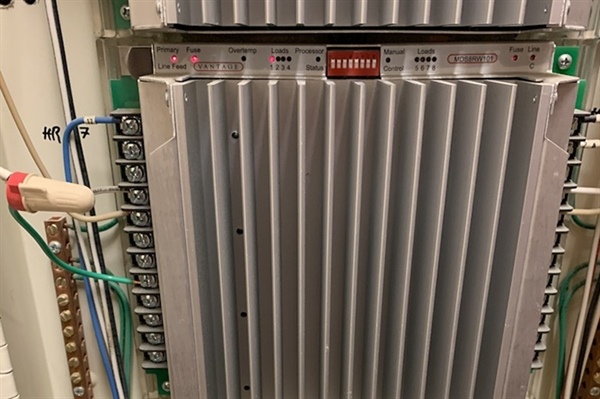How Does Home Automation Enhance Energy Efficiency in Residences?

Imagine arriving at your residence on a warm Palm Desert, CA evening to find that the lighting has already adjusted and your HVAC system has reached your preferred temperature—this is the promise of integrated home automation solutions.
By networking devices such as thermostats, lighting controls, and appliances, these systems can monitor usage patterns continuously and execute precise adjustments to reduce waste and optimize comfort. Advanced control interfaces and data-driven management now transform traditional electrical setups into dynamic, self-regulating environments that respond to your lifestyle and environmental conditions.
This article addresses five critical questions regarding the key components of a home automation system. We hope these insights from SoCal Electrical & Lighting will provide a technical foundation for advanced readers who demand detailed, evidence-backed analysis across these subtopics.
Essential Components of a Home Automation System
A modern home automation system relies on a network of interconnected devices working in concert. Core hardware includes sensors (motion, temperature, humidity), actuators (smart plugs, motorized shades), a central hub or gateway for communication, and a reliable home network—often leveraging Wi-Fi, Zigbee, or Z-Wave protocols. Together, these components enable data collection and control, transforming a static residence into an adaptive environment powered by real-time insights.
Software platforms form the system’s intelligence layer, offering scheduling, rules-based automation, and machine-learning capabilities. They interpret sensor inputs—such as occupancy or ambient light—and trigger actuators accordingly. Advanced dashboards and mobile apps provide intuitive user interfaces, allowing homeowners to set preferences, view energy reports, and override automated routines from anywhere.
Interoperability is vital. Standards like Matter aim to unify device communication, reducing compatibility challenges. When combined with energy-focused home automation strategies, these systems can precisely control heating, cooling, lighting, and appliance operation, laying the groundwork for significant reductions in wasted energy.
How Smart Thermostats Drive Energy Savings
Smart thermostats represent a cornerstone of energy-efficient HVAC control. Equipped with occupancy sensors, they detect when rooms are in use and adjust temperature setpoints dynamically, avoiding unnecessary heating or cooling. Learning algorithms analyze daily habits and outdoor weather trends to create optimized schedules, reducing runtime without compromising comfort.
Integration with utility demand-response programs can further enhance savings. During peak pricing periods, thermostats can temporarily shift setpoints in response to grid signals, lowering energy costs and grid strain. Detailed usage reports help homeowners identify inefficiencies—such as extended runtime during unoccupied hours—prompting behavioral changes and system adjustments.
Smart thermostats tie into broader electrical services, enabling seamless communication with other home automation elements. Coordinated control of HVAC, window shades, and ventilation can maintain ideal comfort levels while minimizing energy draw, often cutting heating and cooling costs by up to 15% annually.
Automated Lighting Systems and Electricity Consumption Reductions
Automated lighting harnesses occupancy and daylight sensors to ensure illumination is provided only when needed. Motion detectors can switch lights on in corridors or rooms and off after a preset period of inactivity, eliminating “always-on” waste. Daylight harvesting dims or switches off fixtures when sufficient natural light is present, maintaining optimal lux levels with minimal consumption.
Advanced controls allow grouping of lights into zones, each with independent schedules or triggers. Homeowners can program evening scenes that reduce brightness gradually or automate exterior security lighting based on sunset times. Such granular control not only enhances convenience but can slash lighting energy use by 30–50% compared to manual operation.
Integration with smart meters and real-time energy monitoring helps validate savings. Detailed logs show peak usage periods and guide further refinements—such as replacing legacy bulbs with LEDs or adjusting sensor sensitivity—to drive continuous efficiency improvements.
The Role of Smart Appliances in Enhancing Energy Efficiency
Smart appliances—washers, dryers, refrigerators, dishwashers—offer advanced cycle customization, load-size detection, and off-peak operation modes. Refrigerators with adaptive defrost adjust schedules based on usage patterns, minimizing compressor runtime. Washers and dishwashers can delay cycles to hours when electricity rates are lower, taking advantage of time-of-use pricing.
Connectivity enables centralized monitoring of appliance health and performance. Alerts for clogged filters or maintenance needs ensure appliances run at peak efficiency, preventing energy spikes caused by slipping mechanical components. Further, smart plugs provide granular usage data for non-networked devices, flagging vampire loads that contribute to phantom energy drain.
Combined with orchestrated control—where appliances coordinate with HVAC and lighting—smart appliances become part of an ecosystem that adapts to occupancy, weather, and energy pricing signals, delivering holistic efficiency gains rarely achievable through isolated device upgrades.
Integrating Renewable Energy with Home Automation for Optimal Efficiency
Pairing home automation with on-site renewable sources—solar PV, wind turbines, or micro-CHP systems—unlocks new efficiency frontiers. Smart inverters communicate generation and consumption data to the automation hub, which can prioritize self-consumption by shifting appliance operation to peak production times. Excess energy can charge battery storage or, during surplus periods, feed back to the grid.
Automation platforms can implement dynamic load management, throttling non-critical devices when renewable output dips or utility prices spike. This demand-response capability ensures maximum utilization of green energy while preventing grid exports during low-value periods. On-site weather forecasting integrations further refine scheduling, anticipating production changes and pre-cooling or pre-heating spaces accordingly.
By leveraging insights from solar analytics, home automation delivers a seamless interface between generation assets and household loads. Interested homeowners can learn more about how SoCal Electrical & Lighting can design integrated renewable solutions to complement automated controls.
Partner with SoCal Electrical & Lighting for Enhanced Energy Efficiency
With expertise in comprehensive home automation, SoCal Electrical & Lighting guides homeowners through every step—from system design and device selection to installation and ongoing support. Our team delivers tailored solutions that integrate sensors, smart thermostats, automated lighting, and renewable energy assets into a unified energy-management strategy.
Ready to take control of your energy future? Contact us today or call us at 760-699-2686 to schedule a consultation and start saving on utility bills while reducing your carbon footprint!